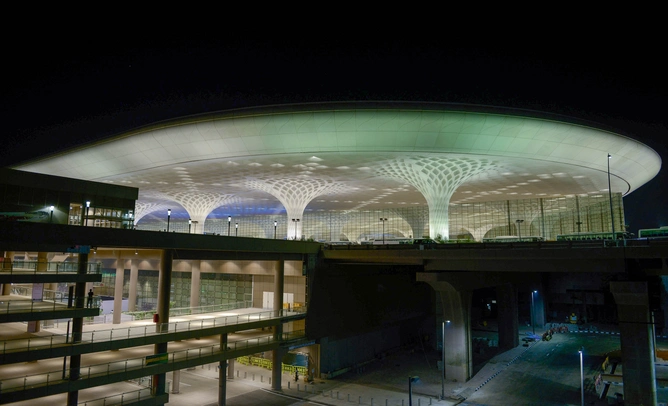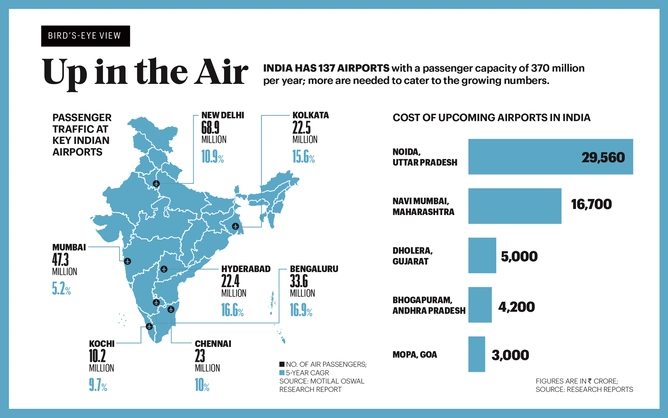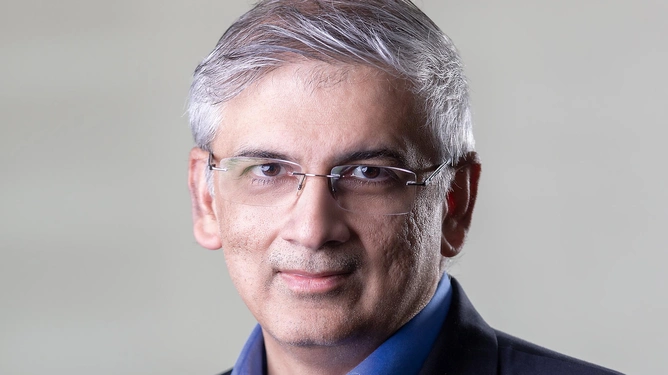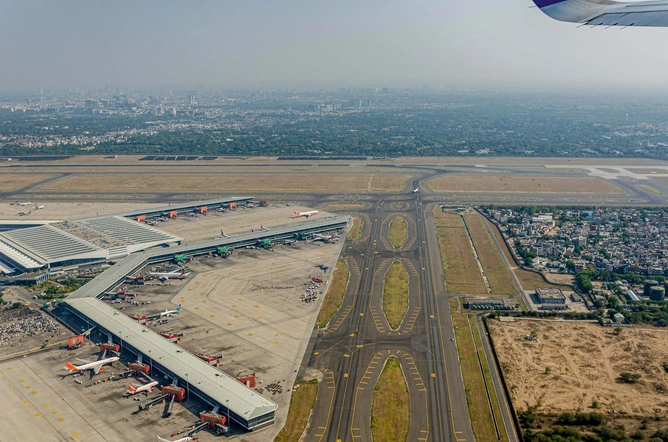(UPDATES: The Ministry of Civil Aviation on March 23 suspended all domestic flight operations indefinitely; Sanjiv Kapoor, the former COO of Vistara was made advisor of budget airline GoAir on March 20.)
In the second week of March, Ajay Awtaney (38), the editor of livefromalounge.com, an aviation and business travel website, took a full-to-capacity flight from Gorakhpur to Mumbai. This was after the Indian government had started to raise the red flag on travel within and outside the country to contain the spread of the novel Coronavirus (Covid-19) infection. This had to be a one-off, thought Awtaney, and dug a little deeper. Anecdotally, he learnt that domestic flights on many routes were operating at 80%-90% occupancy that week.
The decline in numbers was to start a week later, when the threat of the pandemic became more real. The government announced travel restrictions effective March 18, and airline load factors started to significantly drop, with flights operating at 50%-and-below occupancy. Many Indian companies had started instructing their employees to work from home (WFH) and had put a halt on non-essential travel. The glitzy terminals of India’s metro airports, which had been operating far beyond capacity, started resembling ghost towns. And at the time of writing this, not only has WFH become the current normal, foreign airlines have been forbidden from disembarking passengers in India, for a week starting March 22.
This is an unknown, uncertain phase for the global economy and aviation is one of the most affected by the nature of the disease, in that it spreads on contact and thus has led to restrictions on physical movement. “Cash flows have reduced considerably because both aeronautical revenue and non-aeronautical revenue have come down,” says Satyan Nayar, secretary general of the Association of Private Airport Operators (APAO), whose members include the airports of New Delhi, Mumbai, Bengaluru, Hyderabad and Kochi. Together, the airports handle over half of India’s air passenger traffic.
In fact, with travel bans having grounded operations, global aviation consultancy firm CAPA has predicted that by May several airlines across the world could be staring at bankruptcy. In India, GoAir has asked some of its employees to go on short-term leave without pay and has terminated the contracts of its expat pilots. The country’s largest airline IndiGo has announced a pay cut ranging between 5% and 20% for some of its employees, effective April 1.
That said, aviation experts like Awtaney are confident that the current situation won’t inexorably change air travel. “People are grounded because they have to be but I don’t think, at this point of time, protocols [of travel] are changing across companies,” he says. “Business and leisure travel are going to come back.” He, in fact, predicts that pre-pandemic passenger growth will return to the sector as soon the situation normalises. “If domestic airlines manage to ride out the crisis then most probably they are going to play the low-fare game whenever the situation returns to normal.”

The normal was a happy state for air travel in India. In fact, it had reached its “golden age”, Will Boulter, the chief commercial officer (COO) of IndiGo, told Fortune India. Reason: “Over the last 10 years, cost of flying in India has halved in real terms.”
Traffic, then, won’t be the long-term problem facing the sector. Instead, once the skies are cleared of this present gloom, the challenge will emerge the same as before the calamity hit: Choked and inadequate infrastructure.
“Airports in our biggest cities are choked. Even if new airports were to open in cities like New Delhi and Mumbai, it won’t be good enough,” says veteran airline executive and former COO of full-service airline Vistara, Sanjiv Kapoor, unequivocally. And the problem isn’t terminal capacity. Airports in India’s metros are hugely constrained by airside capacity such as runways, taxiways, and parking bays. “This is single-handedly the largest deterrent to growth,” says Vinamra Longani, head of operations for Sarin & Co., an Indian law firm specialising in aircraft leasing and finance.
A report by brokerage firm Antique Stock Broking shows that little has been invested in upscaling airport infrastructure in the country: The last five-year average is $1.8 billion in India as against $8.3 billion in China. Instead, airport operators, adds Longani, have focussed on adding terminal capacity which does little to mitigate the lack of airside capacity. “Over the last five to six decades, if you look at all the civil airports in India where commercial airlines operate, there was a net addition of just two runways (the third runway at New Delhi’s airport, in 2008, and second runway at Bengaluru airport, in December 2019). In the same period China had added hundreds of runways,” says Kapoor.

Consider that the Indira Gandhi International Airport (IGIA) in New Delhi is fast approaching traffic of around 70 million passengers annually, about the same handled by DFW Airport in Dallas, U.S. But the Dallas airport, which covers an area of 26.9 square miles as compared to Delhi’s 8 square miles, has seven operational runways. Six of these can handle independent parallel operations, where flights can land and take off at the same time, says Devesh Agarwal, editor, bangaloreaviation.com, an aviation news portal. IGIA, on the other hand, with three runways, can handle two independent parallel operations. Even in the busy commercial capital of Mumbai, the Chhatrapati Shivaji International Airport (CSIA) has only two runways. Worse, they intersect each other; as a result, only one runway can be operated, considerably limiting the airport’s growth. Agarwal, who wrote in depth about India’s lagging airport expansion three years ago, believes Mumbai should be operating with a “minimum of two parallel runways, if not three”.

“Airports in our biggest cities are choked. Even if new airports were to open in cities like New Delhi and Mumbai, it won’t be good enough.”Sanjiv Kapoor, former COO, Vistara
The view from I. Prabhakara Rao, deputy MD of GMR Group, the operator of IGIA and the Rajiv Gandhi International Airport in Hyderabad, however, is that “efficiency in operations” is more important than counting the number of runways. He claims that Indian airports such as IGIA are more efficiently managed than their global peers. “But in India we are not able to promote the efficiency that we bring to the table,” he shrugs.
The burden on Indian airports is certainly at par—if not higher—than many global peers. In the days preceding the Coronavirus outbreak, the airports of New Delhi, Mumbai, Bengaluru, and Hyderabad operated at over 130% of their installed capacity (terminal and airside combined), according to research firm CRISIL. “Capacity at these four airports will increase a cumulative 65% to 228 million annually (from 138 million now) by fiscal 2023. [At the same time] passenger traffic is expected to grow strong, at up to 10% per annum over the same period,” says Manish Gupta, senior director, CRISIL Ratings. Because the additional airport capacities (again, combined terminal and airside) will become operational by 2023, but only in phases. In that context, the high passenger growth is likely to add to the congestion. That in mind, according to CRISIL, ₹38,000 crore in capex, largely debt-funded, is being undertaken by the operators of these airports from 2020 to 2024. This is the highest amount invested for any five-year period.
Member airports of APAO are operated by the private sector through long-term concession agreements with the government. The operators are assured of steady returns by collecting tariffs from passengers and airlines, which are decided by the Airports Regulatory Authority of India. These tariffs are reviewed every five years. Acuité Ratings & Research president Suman Chowdhury says operators can seek an increase in passenger user charges (or the user development fee that passengers pay) if expected revenue from passenger traffic is not generated, as the current scenario suggests. “We believe that any such compensation for low traffic in a short window (likely to be two to three months) over the five-year control period may be difficult to obtain or, at best, it may not come in a timely manner,” he says.

Keeping in view the unfolding situation, APAO is considering seeking a moratorium on the airport’s payment of revenue share to the government. “For example, New Delhi’s airport pays a revenue share of 46% and Mumbai’s airport pays almost 39% revenue share to the government,” points out Nayar, who in the same breath admits that airport infrastructure in the country has been behind the demand curve. “I don’t think anybody anticipated this kind of growth [from 14 million domestic passengers annually to 144.17 million in 2019],” he says.
This growth is the reason why most of these operators have already chalked out expansion plans of their passenger capacity for the next three to five years.
With an outlay of ₹9,000 crore, the GMR Group is gearing IGIA to handle a passenger traffic of 100 million annually, up from 64 million at present. Besides the addition of a fourth runway, likely to become operational by year end, the number of apron stands—where an aircraft can park—is being increased from 55 to 82. At Hyderabad airport too, GMR is doubling the airport’s passenger capacity to 50 million annually. (Meanwhile, in February this year, Groupe ADP, which operates the Paris-Charles de Gaulle, Paris-Orly and Paris-Le Bourget airports, picked up a 49% stake in GMR Airports Limited (GAL), the airports business of the GMR Group, for ₹10, 780 crore. The deal pegged GAL at a post-money valuation of ₹22,000 crore.)
In Bengaluru, the Kempegowda International Airport (or BLR Airport) is undergoing a massive ₹13,000-crore infrastructure expansion. The airport handled 33.65 million passengers in 2019, registering a 4.1% growth over the previous year. Besides a second runway, the first phase of a second terminal (T2) is being built, and should be operational in 2021. Supporting infrastructure including aprons, taxiways, landside development, and utilities are being constructed too.
“Once Phase 1 of T2 goes live in 2021, BLR Airport will be able to able to cater to approximately 45-50 million passengers per annum,” says Hari Marar, managing director and CEO of Bangalore International Airport Limited (BIAL), which operates BLR Airport. The airport is also widening its main access road from four lanes to 10; this is scheduled for completion in early 2021. “For the foreseeable future, we do not see any congestion at the BLR Airport—the new infrastructure will create additional capacity and enable us to serve up to 90 million passengers per annum,” says Marar.
The government, too, is looking to up the ante. India has 137 airports with a passenger capacity of 370 million, of which 127 are operated by the government-run Airports Authority of India. Of these, 96 airports are operational, while the remaining 41 are either non-operational or have negligible passenger flow. Recently, the government announced an ambitious plan of opening 100 airports in five years, entailing an investment of `1 lakh crore. Among those is the Navi Mumbai International Airport, in Panvel, which is being built by GVK, the operators of CSIA in Mumbai.
“In the first phase, we are talking about one runway servicing around 10 million passengers. That is noise; it won’t make a difference. We need to think big from the get-go,” says Kapoor, who estimates that Mumbai’s second airport needs to open with four runways and be able to handle passenger traffic of about 50 million annually. This is akin to Beijing Daxing International Airport, the second airport in Beijing, China, which opened last year. “I don’t think the Navi Mumbai airport is solving the problem [of congestion issues at CSIA] because the ambition is too limited, too small,” he adds. Also, the Navi Mumbai airport has been in the works since the late ’90s, but has been stalled due to various environmental clearances. “If our major cities remain hobbled because of airport capacity, Indian aviation will remain hobbled in growth,” says Kapoor.
Even as the Indian government promotes various growth-friendly initiatives such as its regional connectivity scheme Udan (Ude Desh Ka Aam Naagrik) and the proliferation of new airports, connectivity to airports located in state capitals remains key. Simply because, most people living in smaller cities want to travel to the big cities. “For Udan and the small airports to reach full potential, the big metro airports need to provide hub capacity,” adds Kapoor. Unfortunately, Udan, which was launched in 2016, hasn’t been a runaway success. Only about a third of the air routes (of over 600) awarded under the scheme are operational. And these routes are now primarily being serviced by mainline carriers such as IndiGo, SpiceJet and Air India. Most of the regional airlines that were meant to benefit from Udan have ceased operations.

In most major airports around the world, expansions are done in partnership with airlines. In fact, in some cases, terminals are dedicated to the airline. In India, says Kapoor, this kind of a dialogue is very limited. “It’s more about the airports and the government deciding the future growth,” he says. But that, then, becomes a point of contention for the ‘other’ side. Because, as Nayar of APAO retorts, “Airlines went and placed large orders with aircraft manufacturers, which was not discussed with the airports. Unless their business plans are told in advance, airports will never know what the actual growth forecast looks like.”
At this point, though, all stakeholders will agree: The current climate— and the future of aviation—doesn’t allow for any blame game. Instead, it calls for joint preparedness for a turbulent path ahead.







Leave a Comment
Your email address will not be published. Required field are marked*